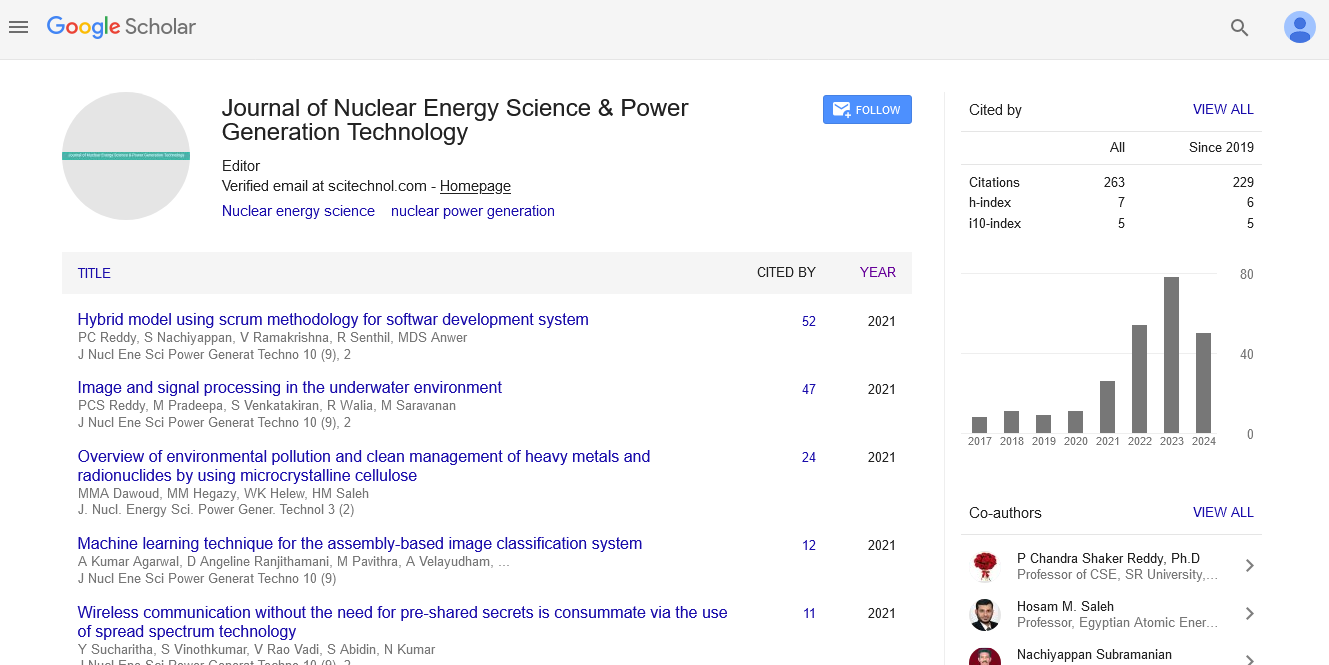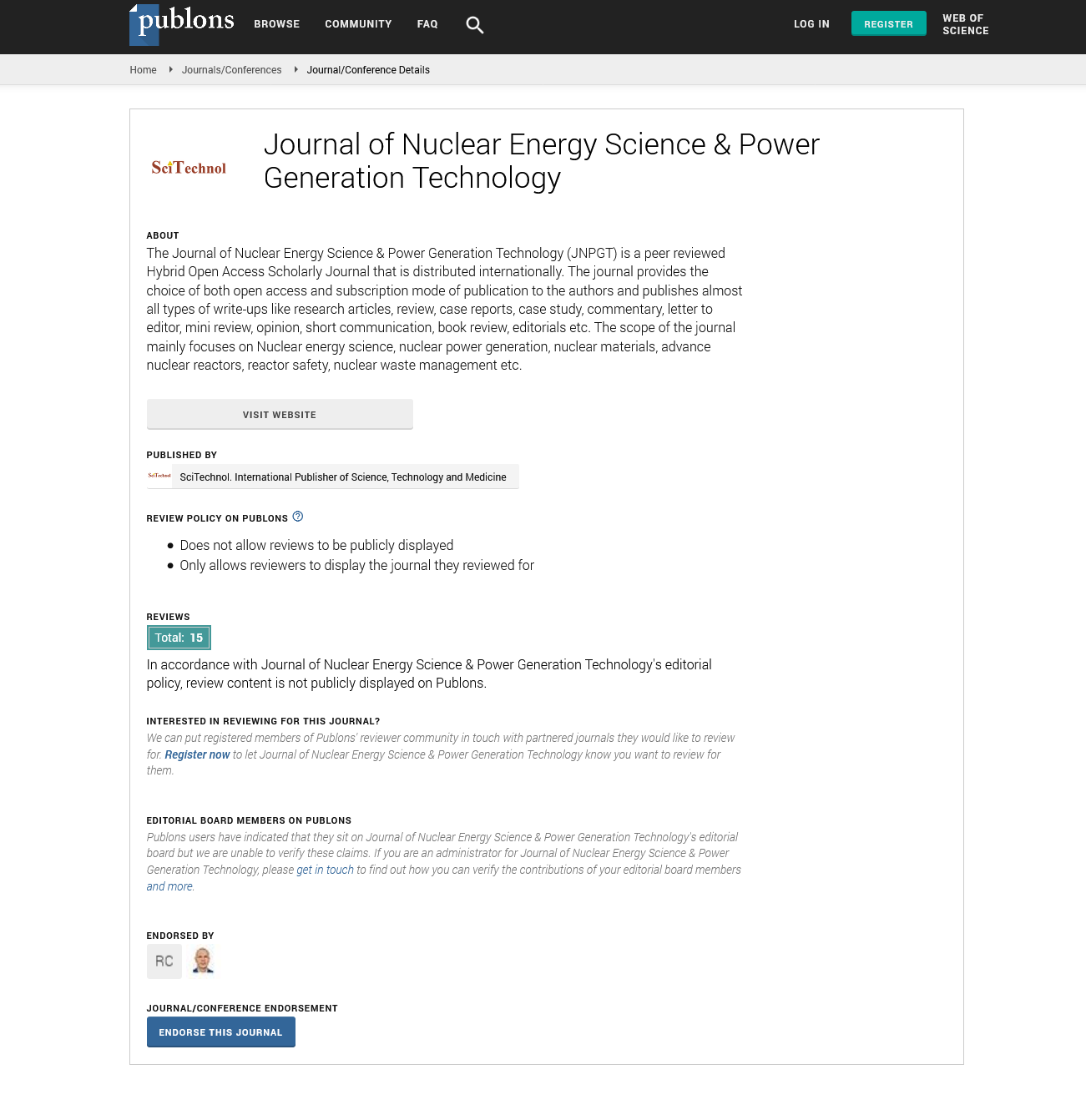Flow characteristics of heavy crude oil diluted with alcohols
Adango Miadonye
Cape Breton University, Canada
: J Nucl Ene Sci Power Generat Technol
Abstract
This study investigates the reduction in heavy petroleum viscosity using protic and hydrocarbon solvents for their enhanced flow properties. Increasing oil demand is fueling the development of the world’s huge deposit of heavy petroleum. However, their high viscous nature is an impediment in their utilization as they cannot be transported without proper treatment. Several methods have been utilized to reduce heavy oil viscosity for ease of transportation which includes use of diluents, emulsions, site upgrading and heated pipelines. Some of the most used diluents to reduce the viscosity are gas condensates, light hydrocarbons, gas oil and kerosene. Since the light crude oil and condensate reservoirs are depleting, there is a need to find more alternative diluents for the transport of these huge energy resources. In this study, alcohols as protic solvent and their mixtures with toluene (non-polar solvent) are used as diluents for the heavy oil. Alcohols have been successfully used in gasoline blending, and with their polar, could prove effective in heavy oil viscosity reduction. Three alcohols (methanol, ethanol and propanol) and their mixtures were used as diluents to reduce viscosity of heavy oil and medium crude oil samples. The equation of Putagunta et al developed as shown in Fig. 1 was used to model the viscosity data and compared with experimental values. The correlation showed a deviation of within 10 percent of measured data. Results showed that alcohols are efficient diluents for heavy crude oil viscosity reduction because of their high polarities. Ethanol is most efficient viscosity reducer of crude oil as compared to methanol and propanol, even though ethanol is less polar than methanol. Among the combinations used, a mixture of methanol and ethanol with toluene was found to be the most efficient viscosity reducer of crude oils. The viscosity reduction of crude oil with the alcohols was higher for heavy oil than medium crude oil because of the higher asphaltenes content in the heavy oil. The results also showed that less volume of alcohol is required to cause the same viscosity reduction as compared to condensates, kerosene, light hydrocarbons and other diluents. Thus, higher volumes of heavy oil can be transported using alcohols as viscosity reducing diluents.
Biography
Adango Miadonye is the Professor of Chemical Engineering and Industrial Chemistry in the School of Science & Technology has received global recognition in the field of petroleum engineering and petroleum chemistry. His impressive publication record includes 80 peer-reviewed articles, numerous book chapters, and a number of presentations at important international conferences. He is an accomplished and respected student supervisor, extensively cited. He is well-respected by his colleagues nationally and internationally. He has been a leader and contributor to his professional academic community holding offices and serving on committees with numerous academic and professional societies.
E-mail: adango_miadonye@cbu.ca
 Spanish
Spanish  Chinese
Chinese  Russian
Russian  German
German  French
French  Japanese
Japanese  Portuguese
Portuguese  Hindi
Hindi 

